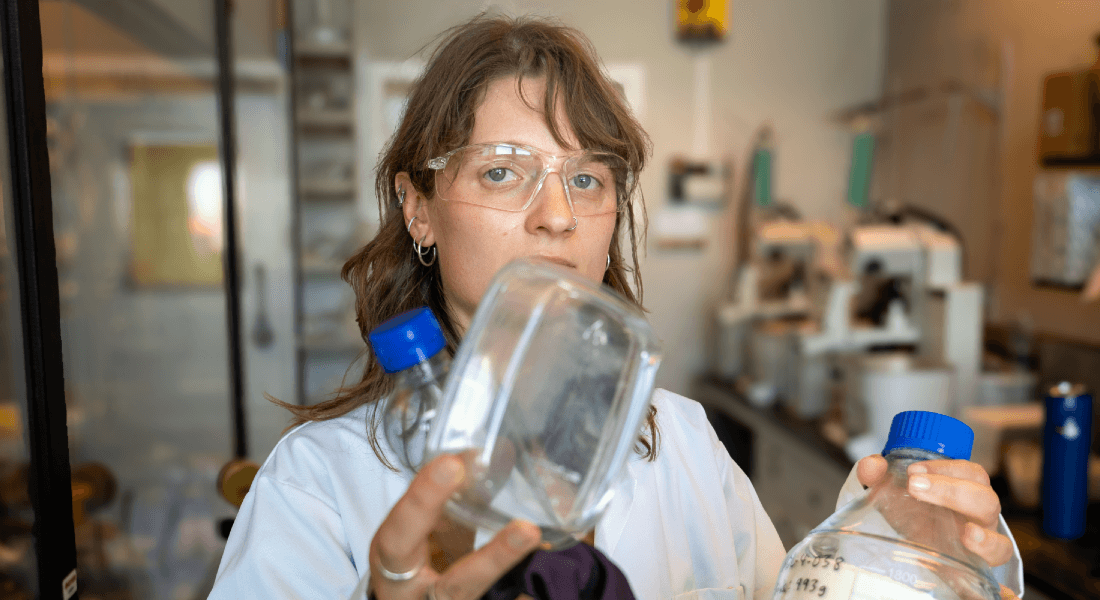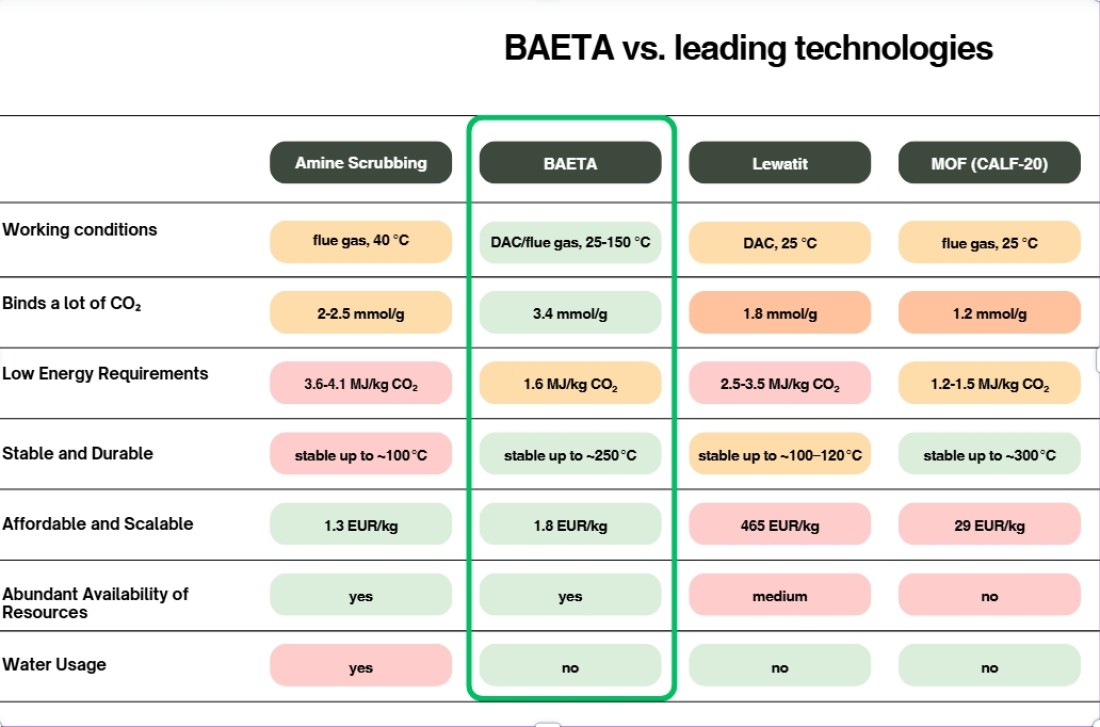Scientists transform plastic waste into efficient CO2 capture materials
From waste to valuable resource: Chemists at the University of Copenhagen have developed a method to convert plastic waste into a climate solution for efficient and sustainable CO2 capture. This is killing two birds with one stone as they address two of the world’s biggest challenges: plastic pollution and the climate crisis.

As CO2 concentrations in the atmosphere keep rising regardless of years of political intentions to limit emissions, the world’s oceans are drowning in plastics, which threatens marine environments and ecosystems.
The key global problems are often interconnected, and typically, the solution to one problem creates another one while the clock keeps ticking. But what if we could solve several problems at the same time?
It’s almost too good to be true, but a new cutting-edge invention promises to do just that. Researchers at the University of Copenhagen have developed a method where one man’s trash really does become another man’s “treasure”, when decomposed PET plastic becomes the main ingredient in efficient and sustainable CO2 capture.
We know the material from plastic bottles, textiles, and many other uses: PET plastic is one of the most widely used types of plastic in the world, but when it has served its purpose, it becomes a pressing global environmental issue. This is because it ends up in landfills in many parts of the world, where it breaks down into polluting microplastics that spread to the air, soil and groundwater. A large portion also end up in the oceans.
“The beauty of this method is that we solve a problem without creating a new one. By turning waste into a raw material that can actively reduce greenhouse gases, we make an environmental issue part of the solution to the climate crisis,” says Margarita Poderyte from the Department of Chemistry at the University of Copenhagen, lead author of the research paper disclosing the invention.
The solution is a potential win-win on a global scale, where plastic waste not only does not end up in nature but also becomes an active player in climate mitigation.
Facts: How CO2 capture works
Measured in weight, PET plastic constitutes over 60 percent of carbon, and the material has an inherent chemical and physical ability to maintain the structure.
This ability is enhanced by transforming the plastic by adding a quantity of ethylenediamine, a compound known for its ability to bind CO2.
The process breaks down the plastic from polymer to a monomer, giving the material a chemical composition that is very effective in pulling CO2 out of the air and binding it.
The material is called BAETA.
In industrial plants, the idea is to transmit the exhaust through BETA units, which will cleanse it of CO2. When the BAETA material is saturated, its efficiency decreases; however, CO2 can be released from the plastic through a heating process, restoring its efficiency.
The carbon released can then be stored underground or used in Power2X plants via CO2 utilization.
With the new chemical technology, researchers can transform PET plastic waste that is overlooked by recyclers into a primary resource in a new form of CO2 sorbent they have developed. The process ‘upcycles’ it to a new material the researchers have named BAETA, which can absorb CO2 out of the atmosphere so efficiently that it easily compares with existing carbon capture technologies.

Sustainable, flexible and scalable
The BAETA material has a powdery structure that can be pelletized, and a chemically ‘upgraded’ surface, which enables it to very effectively bind and chemically capture CO2. Once saturated, CO2 can be released through a heating process allowing the CO2 to be concentrated, collected and stored or converted into a sustainable resource. In practice, the researchers expect the technology to be first installed on industrial plants with exhausts from chimneys passing through BAETA units to cleanse them of CO2.
The research paper is published in Science Advances journal, which describes the chemical process behind the invention. The process is gentle compared to existing technologies and, at the same time, well-suited for industrial scaling.
“The main ingredient is plastic waste that would otherwise have an unsustainable afterlife, and the synthesis we use, where the chemical transformation takes place, is gentler than other materials for CO2 capture because we can make the synthesis in ambient temperatures. It also has the advantage that the technology can be scaled up more easily,” Margarita Poderyte says.
More info: No conflict with recycling
During the development process, the researchers encountered concerns that their technology could undermine efforts to recycle plastic, which has been heavily invested in. Fortunately, that is not the case, they say.
“In principle, we could use new plastic for our method, but our target is PET plastic that is difficult to recycle because of low quality, coloration or mixed sources – or that has decomposed to such a degree that it’s no longer suitable for recycling. So, this will be a collaboration rather than competition with the efforts to recycle plastic,” Margarita Poderyte says.
She is seconded by co-author and Associate Professor at the Department of Chemistry, Jiwoong Lee, who highlights the material’s flexibility also.
“One of the impressive things about this material is that it stays effective for a long time. And flexible. It works efficiently from normal room temperature up to about 150 degrees Celsius, making it very useful. With this kind of tolerance to high temperatures, the material can be used at the end of industrial plants where the exhausts are typically hot,” Jiwoong Lee says.

From laboratory to innovation at the end of the chimney
With a potentially revolutionary idea, a proven method and an effective finished product, the researchers are now ready for the next step.
“We see great potential for this material, not just in the lab, but in real-life industrial carbon capture plants. The next big step is scaling up to produce the material in tonnes, and we’re already working to attract investments and make our invention a financially sustainable business venture,” Margaryte Poderyte says.
The technical challenges do not worry the researchers. Instead, the decisive challenge, they say, is to persuade decision-makers to make the necessary investments. If they succeed in that, the invention could ultimately lead to significant changes.
A sea of cheap plastic
Large amounts of PET plastic accumulate in our oceans, damaging ecosystems and breaking down into microplastics, the consequences of which are yet unknown. That sort of plastic is very well suited for the technology.
“If we can get our hands on the highly decomposed PET plastic floating in the world’s oceans, it will be a valuable resource for us as it’s so well suited for upcycling with our method,” Margarita Poderyte says.
The researchers hope that their invention can help to fundamentally change the way we see climate and environmental issues as separate problems.
“We’re not talking about stand-alone issues, nor will the solutions be. Our material can create a very concrete economic incentive to cleanse the oceans of plastic,” Jiwoong Lee says.
About the study:
This project is supported by the Novo Nordisk Foundation CO2 Research Center in collaboration with the group of Niels Christian Nielsen, Aarhus University.
The following researchers have contributed to the research article:
Margarita Poderyte
Ji-Woong Lee
Arianna Lanza
Rodrigo Lima
Dennis Wilkens Juhl
Kathrine L. Olesen
Niels Chr. Nielsen
Contact
Margarita Poderyte
PhD fellow
Department of Chemistry
University of Copenhagen
E-mail:marpo@chem.ku.dk
T: +45 35 32 57 06
Ji-Woong Lee
Associate Professor
Department of Chemistry
University of Copenhagen
E-mail: jiwoong.lee@chem.ku.dk
T: +45 35 33 33 12
Kristian Bjørn-Hansen
Press and Communications Officer
UCPH Communication
Email: kbh@adm.ku.dk
M: +45 93 51 60 02
